Graduate Student Projects
A number of Graduate Students are conducting DPhil projects within the Primate Models for Behavioural Evolution Lab at the University of Oxford under the supervision or co-supervision of Dr Susana Carvalho. This page highlights a few of their ongoing research projects. You can read more about our current Graduate Students through our Lab Members section here.
Why say “goodbye”? A cross-species comparison of leave-taking - led by Lucy Baehren
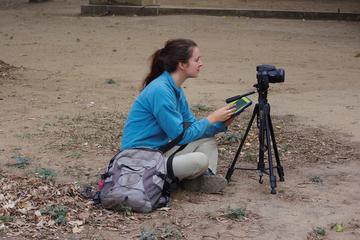
This project, led by DPhil student Lucy Baehren, will initiate long-overdue research on the evolution of leave-taking: behaviours habitually occurring before separation from social interaction. It is thought to be a human universal, providing ritual brackets around interaction (Goffman, 1971) but despite Knapp’s claim that leave-taking can tell us a good deal about human interaction (Knapp, 1973), the topic remains critically overlooked. Cross-species data on leave-taking would be key to unveiling its evolutionary history and its role in sociality, but studies focusing on non-human species are rare (McGrew and Baehren, 2016). This project aims to understand the ways in which leave-taking can contribute to our understanding of social evolution and develop methods to operationalise its study through the use of close-range video footage. This will allow comparison of non-human species, such as chimpanzees (Pan troglodytes), chacma baboons (Papio ursinus) and vervet monkeys (Chlorocebus pygerythrus) to test possible functions of leave-taking e.g. social bonding or mediating aggression.
Supervisors: Dr Susana Carvalho and Professor Harvey Whitehouse
References:
Goffman, E., 1971. Relations in public: Microstudies of the social order. London: Allen Lane
Knapp, M.L., Hart, R.P., Friedrich, G.W. and Shulman, G.M., 1973. The rhetoric of goodbye: Verbal and nonverbal correlates of human leave‐taking. Communications Monographs, 40(3), pp. 182-198.
McGrew, W.C. and Baehren, L., 2016. "Parting Is Such Sweet Sorrow", But Only for Humans? Human Ethology Bulletin, 31(4), pp. 5-14.
An inter-site comparison of baboon approach behaviour from video data - led by Jana Muschinski

This project investigates variation in baboon behaviour across two field-sites, Gombe Stream Research Centre, Tanzania and Gorongosa National Park, Mozambique. Using video data, I am conducting a high-resolution, detailed investigation of behaviours performed during the approach of one individual towards another (“proximity events,” elsewhere often referred to as “greetings”). Greetings play an important role in humans and in many primate species, assisting with navigation of rank, reinforcement of social bonds, and testing of cooperative potential (Eibl-Eibesfeldt, 1989; Dal Pesco and Fischer, 2020). Human ethological research indicates greeting is a universal human behaviour (Eibl-Eibesfeldt, 1989). By studying such behaviours in nonhuman primates, we can investigate its phylogenetic origins and driving selection pressures. Baboons are a valuable model for this as they show variation in social system, male-male cooperation, and greeting across subspecies. Male-male greetings in Guinea, hamadryas, yellow and olive baboons have been relatively thoroughly studied, but work on chacma baboons is limited (Dal Pesco and Fischer, 2020). Lack of systematic study of greetings in chacma baboons until 2015 is likely a result of early studies noting the absence of large, easily identifiable greeting action as seen in hamadryas or guinea baboons (Saayman, 1971; Kalbitzer et al., 2015). This project uses video footage of a troop of chacma baboons and a troop of olive baboons to collect fine scale data on behaviours displayed when two individuals come within two meters of each other. This study is novel in its use of video to collect detailed behavioural and sequential data, detailed analysis of physical actions and vocalizations in male-female and female-female interactions in addition to the traditional highlight of male-male interactions, and inclusion of all events where two individuals come in close proximity, rather than including only events where “greeting interactions” occurred (but see Kalbitzer et al., 2015). Collection of further olive and chacma baboon data will allow comparison with existing literature for the two subspecies to assess within subspecies variability and the potential for culture in baboon greetings.
Supervisor: Dr Susana Carvalho
Collaborators: Dr Anthony Collins (Baboon Research Project, Gombe Stream Research Centre, Tanzania)
References:
Dal Pesco F, Fischer J. 2020. On the evolution of baboon greeting rituals. Philos Trans R Soc B 375.
Eibl-Eibesfeldt I. 1989. Human Ethology. London: Aldine Transaction.
Kalbitzer U, Heistermann M, Cheney D, Seyfarth R, Fischer J. 2015. Social behavior and patterns of testosterone and glucocorticoid levels differ between male chacma and Guinea baboons. Horm Behav 75:100–110.
Saayman GS. 1971. Behaviour of the Adult Males in a Troop of Free-ranging Chacma Baboons (Papio ursinus). Folia Primatol 15:36–57.
In the face of change: the effects of major ecological shifts on primates in the impacted environment of Gorongosa National Park, Mozambique - led by Megan Beardmore-Herd
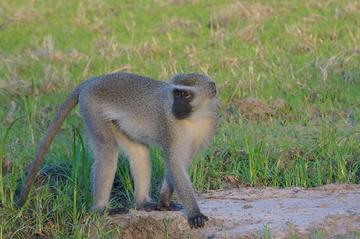
This project will use camera trap data to investigate the effects of real time ecological change on the distribution and ranging patterns of vervet monkeys (Chlorocebus pygerythrus) and chacma baboons (Papio ursinus griseipes) in Gorongosa National Park, Mozambique. The climate in Gorongosa is highly seasonal, with a marked wet season occurring from December to April annually which causes up to 40% of the Park to flood and a dry season which sees many of the water sources relied upon by Gorongosa’s wildlife dry up. One aspect of the project will explore the effect of these extremes of water availability on Gorongosa’s vervet monkey population, using the findings to inform our understanding of the role of water in human evolution. Another aspect of the project will focus on predator-prey dynamics, using ongoing carnivore reintroductions in Gorongosa National Park (including the reintroduction of leopards, a major predator of vervet monkeys across other sites) to study the effects caused by a major change in the landscape of fear. Finally, the project will analyse the effects of a recent natural disaster, Cyclone Idai, on the spatial and temporal activity of Gorongosa’s vervet monkeys immediately after the event and in the seasons that followed. The findings from these three interconnected investigations will be used to inform our understanding of how ecological change would have shaped the lives and evolution of our own lineage, whilst also providing the first population-level data on vervet monkeys in Gorongosa National Park, and Mozambique more broadly.
Supervisors: Professor Susana Carvalho and Professor Julia Fischer
Collaborators: Dr Meredith Palmer, Dr Kaitlyn Gaynor, and the Paleo-Primate Project Gorongosa
Developmental Origins of Individual Differences in Chimpanzee Technological Efficiency: A Longitudinal Study of Nut-Cracking in Bossou - led by Sophie Berdugo
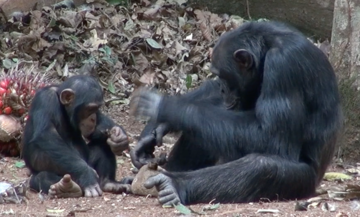
The use of a stone tools for cracking nuts by West African chimpanzees (Pan troglodytes verus) is known to show similarities to Oldowan technology, the first well-documented hominin lithic techno-complex currently dated to 2.61-2.58 Ma (Braun et al., 2019; Carvalho, Cunha, Sousa, & Matsuzawa, 2008). Inter-individual variation in chimpanzee (Pan troglodytes) technological behaviour is well established, including a female bias in efficiency (Boesch & Boesch, 1981; Lonsdorf, 2005). However, this variation is largely unexplored for the nut-cracking behaviour in Bossou, Guinea, which is socially learned through an “education by master-apprenticeship” process involving close observation of a tolerant maternal model (Matsuzawa et al., 2001). Also, the causes of individual differences are poorly understood for lithic technology. This project will investigate how differences in technological efficiency arise in chimpanzees in Bossou. Specifically, it will assess whether differences in the “education by master-apprenticeship” learning process predict individual differences in nut-cracking efficiency in adulthood. Moreover, it will investigate whether any biases in nut-cracking model selection exist. This longitudinal project will utilise 31 years of archival video data of the Bossou chimpanzee community, provided by Dr Tetsuro Matsuzawa and the Primate Research Institute, Kyoto University, Japan. This research will inform our understanding of chimpanzee technological behaviour which allows inferences to be drawn regarding hominin social, cultural, and technological evolution.
Supervisors: Dr Emma Cohen and Dr Susana Carvalho
Collaborators: Daniel Schofield and the Visual Geometry Group, Department of Engineering, University of Oxford
Sources of Funding: Clarendon Fund, University of Oxford and Boise Trust, Department of Zoology, University of Oxford
References:
Boesch, C., & Boesch, H. (1981). Sex Differences in the Use of Natural Hammers by Wild Chimpanzees: A Preliminary Report. Journal of Human Evolution, 10, 585–593. https://doi.org/10.1016/S0047-2484(81)80049-8
Braun, D. R., Aldeias, V., Archer, W., Arrowsmith, R., Baraki, N., Campisano, C. J., … Reed, K. E. (2019). Earliest known Oldowan artifacts at >2.58 Ma from Ledi-Geraru, Ethiopia, highlight early technological diversity. Proceedings of the National Academy of Sciences of the United States of America, 116(24), 11712–11717. https://doi.org/10.1073/pnas.1820177116
Carvalho, S., Cunha, E., Sousa, C., & Matsuzawa, T. (2008). Chaînes opératoires and resource-exploitation strategies in chimpanzee (Pan troglodytes) nut cracking. Journal of Human Evolution, 55(1), 148–163. https://doi.org/10.1016/j.jhevol.2008.02.005
Lonsdorf, E. V. (2005). Sex differences in the development of termite-fishing skills in the wild chimpanzees, Pan troglodytes schweinfurthii, of Gombe National Park, Tanzania. Animal Behaviour, 70, 673–683. https://doi.org/10.1016/j.anbehav.2004.12.014
Matsuzawa, T., Biro, D., Humle, T., Inoue-Nakamura, N., Tonooka, R., & Yamakoshi, G. (2001). Emergence of culture in wild chimpanzees: education by master-apprenticeship. In T. Matsuzawa (Ed.), Primate origins of human cognition and behavior (pp. 557–574). Tokyo: Springer.
Bones and Ecology in the Southern African Rift Valley: Implications for our understanding of Human Evolution - led by Jacinto Mathe
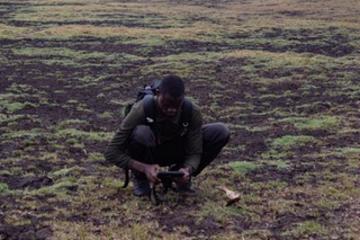
The fossil evidence for human evolution in Africa is primarily found in two distinct types of settings: 1) the river and lake deposits of the East African Rift Valley, and 2) the karstic cave systems of South Africa. Palaeontological and archaeological samples in these settings constitute tools used to make inferences about past environments, biological evolution, and cultural beginnings. However, important questions remain about how well our palaeontological collections represent the animals that lived in those ancient landscapes, and the opportunities that these animals presented for hunting and scavenging hominins. Although there are well-known fossil sites in the northern and central parts of the African Rift Valley the southern portions, particularly Gorongosa National Park (GNP) in Mozambique, remain palaeontologically and archaeologically understudied. The factors that control the density and distribution of bones in modern sedimentary landscapes shed light on the variables that control the density and distribution of fossils in palaeontological and archaeological sites. Therefore, this research proposal aims to carry out surveys of modern bones across seven main Rift Valley landscapes and in at least eight karstic caves in GNP. The surveys will be conducted in 192 plots set in 12 grids and additionally in sixteen non gridded plots stablished at eight cave entrances. The analyses will consist of comparing first the numbers of live animals (from aerial surveys and camera trap data) and osteological data, and second, osteological and palaeontological samples from Koobi Fora in the Turkana Basin of Kenya. The comparison with palaeontological samples will allow us to identify biases in fossil samples relevant to the context of early Pleistocene human evolution in a Rift Valley setting analogous to modern Gorongosa. This research will help us to better understand the implications of natural bone distributions and its conditions for our perception of palaeontological and archaeological site formation, and to address issues of hominin palaeoecology and subsistence strategies in rift valley settings analogous to those where our ancestors evolved.
Supervisors: Dr Susana Carvalho and Dr René Bobe
Collaborators: Paleo-Primate Project Gorongosa
Primates and predation in eastern Africa: an exploration of behavioural adaptations to predation pressure and their implications for hominin evolution – led by Philippa Hammond

Predator-prey dynamics create “evolutionary arms races” that significantly shape animal morphology, behaviour, and dispersal patterns due to their direct and severe impact on the inclusive fitness of both predators and prey. Operating within equally-dynamic ecosystems, these arms races are likely to have contributed to faunal extinction and speciation events across evolutionary history and may have influenced some of the key transitions in primate evolution – including in hominins. But to what extent? What were the ecological relationships between prehistoric predators and our early human ancestors? Which behavioural adaptations in hominins might have been most heavily influenced by these relationships, and by what proximate mechanisms? And how do we study the roots of behaviours that evolved millions of years ago?
This research project uses the study of behavioural ecology of extant primates and their predators to explore and interpret the relationships between primates and carnivores from Plio-Pleistocene fossil records. Through field studies of extant baboons (genus Papio) – a highly terrestrial and behaviourally flexible primate living in varied habitats across Africa – we investigate the proximate effects of predation risk on primate behaviour at various scales. With a focus on ranging, nocturnal, and social behaviours, insights from these field studies shed light on mechanisms that might have facilitated some key behavioural transitions in the behavioural evolution of African primates, including hominins, during the Plio-Pleistocene.
Supervisors: Dr Susana Carvalho and Dr Dora Biro
Collaborators: Dr Kaitlyn Gaynor and Dr Meredith Palmer
Research funded by: Grand Union DTP (ESRC), International Primatological Society grant
Chimpanzee Self-Medication in Budongo Forest – led by Elodie Freymann

Homo sapiens are not the only species to self-medicate. Over the last few decades, self-medication has been observed in a variety of primate and non-primate species and throughout a wide range of localities (Huffman, 2016). As of 2016, self-medicative behaviors had been observed in African and Asian great apes across sixteen field sites (Huffman, 2016). However, while recent literature has established that social transmission occurs in captive chimpanzee during self-medicative events (Huffman & Hirata, 2004; Huffman et al., 2010) no study thus far has systematically examined if, how, where, and by whom self-medicative behaviors and medicinal knowledge is transmitted in the wild. My DPhil project, titled ‘Intergenerational Transmission of Self-Medicative Knowledge in Chimpanzees? Examining Putative Modes and Mechanisms of Information Transmission’ addresses this gap in the field of Zoopharmacognosy, evaluating modes and mechanisms of social transmission through which intergenerational self-medicative knowledge may be transferred. To carry out this research, I will spend a four-month fieldwork season studying the Sonso community in the Budongo Forest Reserve, followed by a 4-month field season in the neighboring Waibira community.
As human ethnobotanical behaviors are often undetectable in the fossil record, reconstructing the evolution and transmission of self-medicative behaviors in our own species has been challenging (e.g. Gustafsson et al., 2016; Hardy, 2018). However, the ubiquity of self-medicative behaviors in our closest living relatives, and across many other non-human primates, suggests that primate modelling may be a helpful tool through which we can better understand the evolutionary origins of human medicinal practices, and determine which medicinal resources may have been utilized by early hominin ancestors. The universality of these behaviors in extant Pan and Homo species allows us to parsimoniously infer that the Pan/Homo last common ancestor could self-medicate. Evidence that Homo neanderthalensis used medicinal plants still widely used by modern humans (Hardy et al., 2012, 2013), further supports this theory.
Are knowledge-sharing social networks present in chimpanzees as well as humans? And does social structure or relationships dictate which chimpanzee individuals share medicinal resource sites or techniques? Determining modes of self-medicative transmission in our primate cousins may be crucial to understanding the evolutionary origins of medicinal practices and transmission behaviors which have enabled the creation and maintenance of the many existent modern-day, cumulative, medicinal knowledge systems.
Supervisors: Dr Susana Carvalho, Dr Michael Huffman, and Dr Catherine Hobaiter
References:
Gustafsson, E., Saint Jalme, M., Kamoga, D., Mugisha, L., Snounou, G., Bomsel, M.C., Krief, S. (2016). Food acceptance and social learning opportunities in semi-free eastern chimpanzees (Pan troglodytes schweinfurthii). Ethology, 122 (2), 158e170.
Hardy, K. (2018). Plant use in the Lower and Middle Palaeolithic: Food, medicine and raw materials. Quaternary Science Reviews, 191, 393–405.
Hardy, K. S., Buckley, M. J., Collins, A., Estalrrich, D., Brothwell, L., Copeland, A., García- Tabernero, S., García- Vargas, M., de la Rasilla, C., Lalueza-Fox, R., Huguet, M., Bastir, D., Santamaría, M., Madella, A. and Fernández Cortés, A. Rosas. (2012). Neanderthal medics? Evidence for food, cooking and medicinal plants entrapped in dental calculus. Naturwissenschaften 99, 617–26.
Hardy, K, Buckley S & Huffman MA. (2013). Neanderthal self-medication in context. Antiquity, 87: 873–78.
Huffman, MA., Hirata, S. (2004). An experimental study of leaf swallowing in captive chimpanzees: insights into the origin of a self-medicative behavior and the role of social learning. Primates, 45(2), 113–118.
Huffman, MA., Spiezio, C., Sgaravatti, A., Leca, J. B. (2010). Leaf swallowing behavior in chimpanzees (Pan troglodytes): biased learning and the emergence of group level cultural differences. Animal Cognition, 13(6), 871–880.
Huffman, MA. (2016). Primate self-medication, passive prevention and active treatment—A brief review. International Journal of Molecular Sciences, 3, 1–10.
Decision making and movement in Chacma baboons – led by Lynn Lewis-Bevan
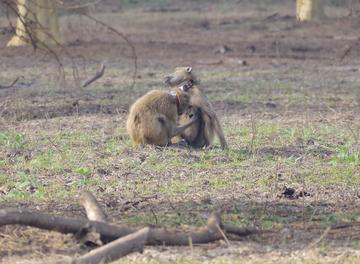
Primate movement is a long-studied field, answering questions ranging from how primates find their way to how our hominin ancestors migrated across the globe. With the rise of monitoring technology such as satellite imagery and GPS tracking, this field faces an unprecedented amount of available data, alongside a need to find a way to compare data cross sites and projects. This project will utilize on-the-ground observations, remote sensing and GPS collar data to investigate how the baboons of Gorongosa National Park make decisions relating to their daily, seasonal and annual movements. Using novel methods as well as adapting the methods of existing literature, it will examine if and how the baboons’ behaviour varies throughout Gorongosa’s radically different wet and dry seasons. It examines data from two troops of baboons, one in the seasonally inundated floodplain and one in the more stable woodland. By comparing these troops, this project will give insight into how ecological factors influence baboon decision making, both within Gorongosa National Park and relative to other, longer-term study sites across Africa. It also explores new methods of using remotely collected data, particularly GPS data where no observational data exists.
Supervisors: Dr Dora Biro and Dr Susana Carvalho
Collaborators: Paleo-Primate Project Gorongosa
The ecology of chimpanzee technology: a comparative approach for modelling hominin landscape-use – led by Katarina Almeida-Warren

Since the discovery of the first Oldowan tools (1.8 Ma; Leakey, 1971), archaeologists have sought to understand the behaviour of the earliest toolmakers, in particular, how did our ancestors navigate the landscape and interact with their environment (Plummer, 2004; Schick and Toth, 1993). The subsequent 90 years of research have added more definition to our understanding of the early hominin record and are providing new tools to work towards a more accurate picture of the past. This includes the recovery of a pre-Oldowan industry (Lomekwian) at 3.3 Ma (Harmand et al., 2015), and indirect evidence of stone tool-use dating to 3.4 Ma (McPherron et al., 2010), as well as the discovery that technological non-human primates can produce an archaeological signature (Mercader et al., 2007), and create flakes akin to some Oldowan tools (Proffitt et al., 2016). Collectively, these findings have shifted the course of archaeological enquiry to an earlier time period (Carvalho and Beardmore-Herd, 2019; Domínguez-Rodrigo, 2012): what were the technological and behavioural precursors of the Oldowan?
This project addresses this question by investigating the technology of our closest living relatives, the chimpanzees, as a comparative framework for reconstructing early hominin ranging patterns and the formation of technological landscapes. The research is primarily taking place at the long-term Western chimpanzee (Pan troglodytes verus) field site of Bossou (Guinea) and is examining the ecological conditions required for nut-cracking to occur and persist over time in spatially discrete locations. The resulting information is being used to develop an interactive computer model of chimpanzee landscape-use in NetLogo, to facilitate the exploration of different ecological scenarios and investigate how they might influence the formation and spatial distribution of tool sites. In combining living chimpanzee archaeology with modern computational methods, this interdisciplinary project will produce the first empirical, landscape-scale study of the ecological and foraging contexts of primate technology and help bring us one step closer to unveiling the lives of our ancestors.
Supervisor: Dr Susana Carvalho
Collaborators: Dr David Braun, Professor Tetsuro Matsuzawa, and Dr Alejandra Pascual-Garrido
Sources of Funding: Fundação pela Ciência e Tecnologia (FCT), Portugal [grant number: SFRH/BD/115085/2016], National Geographic Society [grant number: EC-399R-18], and Boise Trust, Department of Zoology, University of Oxford
Computational ethology for longitudinal analysis of chimpanzee sociality – led by Daniel Schofield
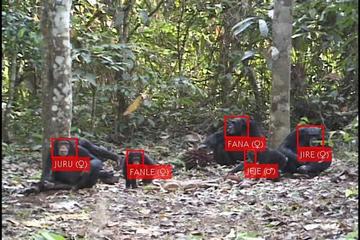
Longitudinal data of wild animal populations is crucial for examining how sociality and behaviour evolves over time. Over several decades of research, accumulating longitudinal video archives now hold vast potential to examine behavioural change over multiple generations, but extracting information from these resources is extremely time consuming, often limiting the scope analysis. This project aims to lead the curation, preservation, and access of a 30 year video archive of wild chimpanzees from Bossou in Guinea, collected by Kyoto university’s Primate Research Institute, Japan. In collaboration with the Visual Geometry Group (VGG) in Oxford it will also pioneer a new computational framework for analysing animal behaviour from video, using methods from computer vision to automatically identify and track individual chimpanzees, and capture how patterns of sociality and behaviour change over the long-term. This work lays the platform for analysis of wild species over large spatial-temporal scales to tackle key questions in behavioural research and conservation.
Supervisor: Dr Susana Carvalho and Dr Dora Biro
Collaborators: Visual Geometry Group (VGG), University of Oxford
Automated geospatial search for hominin ancestors: a computer vision and machine learning approach – led by João d'Oliveira Coelho
When and where did our direct ancestors, i.e., the hominins, originate? The current and possible consensus points to the late Miocene forests and woodlands of Africa. Yet the late Miocene (11.6–5.3 Ma) is an extensive time period ranging over 6 million years, and Africa is a massive continent containing ~12.7% of the Earth’s land. Regrettably the geographic distribution of African fossil sites during this key period is highly biased and the associated hominin fossil record is likewise sparse. Considering the notorious gaps in the fossil record, is it possible to be more precise? My research merges methods and techniques from data science, biogeography, and computational paleontology to shed novel light into the contexts of hominin origins. A set of goals is proposed to address the following outstanding issues: a) define a more precise chronological range for the divergence event between the Hominini and Panini clades, so that we can target sediments of correct age; b) increase the accuracy for remotely detecting new fossil sites, with a focus on undersampled temporal, geographic and paleoecological settings; c) introduce new tools to remotely reconstruct paleoenvironmental features of the landscape; d) solve the problem of fossil site detection in modern forests and other densely vegetated contexts; and e) estimate the likely distribution of early hominin remains across the African continent.
Supervisor: Dr Susana Carvalho and Dr Robert L Anemone.
Sources of Funding: Fundação pela Ciência e Tecnologia (FCT), Portugal [grant number: SFRH/BD/122306/2016], and Boise Trust, Department of Zoology, University of Oxford









